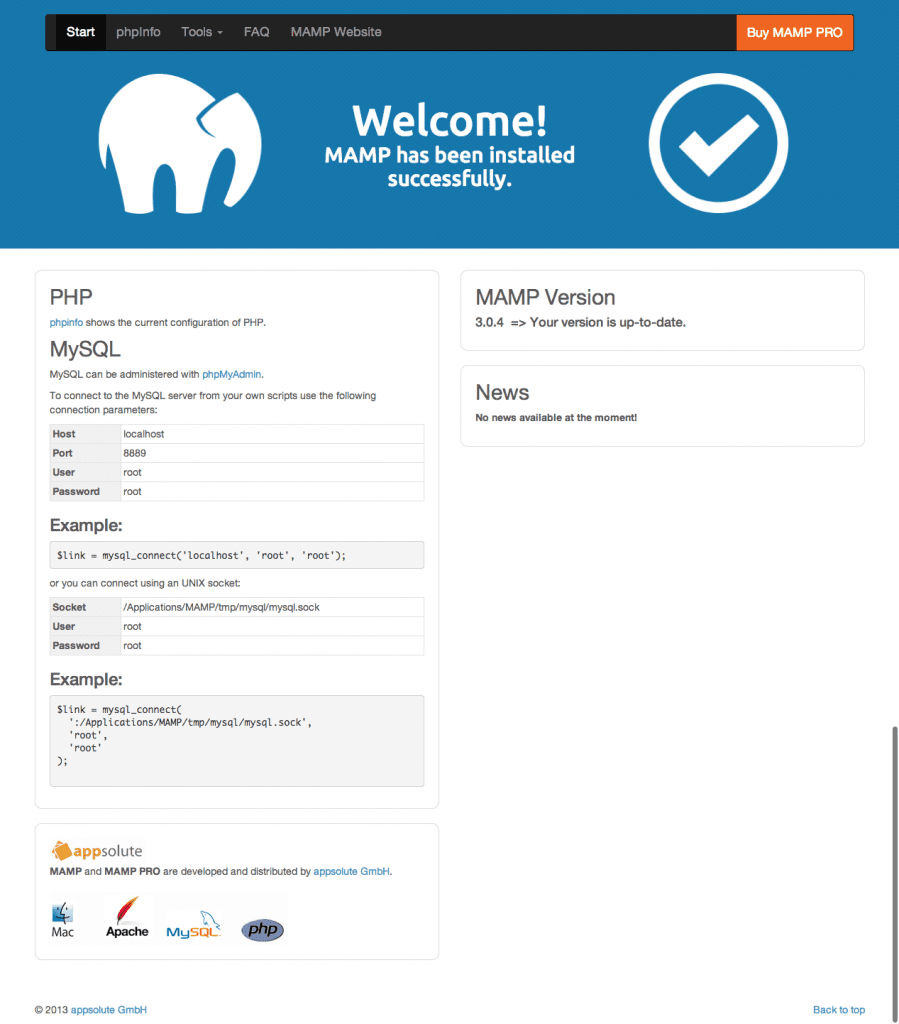MAMP is more than an installer. You can manage various aspects of your web dev environment, but probably the most commonly used is you can stand up a new site on your system with it's own domain name in seconds. It makes web development easy. So things that install Apache, PHP & MySQL only satisfy the least important aspect of what MAMP does. MAMP is the macOS package comprising Apache HTTP server, MySQL database, PHP interpreter, and some libraries. The word 'MAMP' is an acronym, where 'M' stands for 'Macintosh', meaning it's designed for macOS, and the other letters stand for the package components. The name MAMP is an acronym that stems from the names of the components of the system: macOS (the operating system); Apache (the web server); MySQL or MariaDB (the database management system); and PHP, Perl, or Python (programming languages used for web development).
- Download Mamp For Linux
- Map For Linux
- Mamp For Linux
- Mamp For Linux Ubuntu
- Mamp For Linux
- Download Mamp For Linux
Download Mamp For Linux
NOTE: We are in the process of modifying the configuration for many Bitnami stacks. On account of these changes, the file paths and commands stated in this guide may change depending on whether your Bitnami stack uses MySQL or MariaDB. To identify which database server is used in your stack, run the command below:
The output of the command indicates which database server (MySQL or MariaDB) is used by the installation, and will allow you to identify which guides to follow in our documentation for common database-related operations.
Change the MySQL root password

NOTE: When setting a new password, avoid the use of special characters or quotes, as this can sometimes cause issues when accessing the database through shell scripts.
Map For Linux
Linux and Mac OS X
You can modify the MySQL password using the following command at the shell prompt. Replace the NEW_PASSWORD placeholder with the actual password you wish to set.
Mamp For Linux

Windows
You can modify the MySQL password using the following command at the shell prompt. Replace the NEW_PASSWORD placeholder with the actual password you wish to set.
Reset the MySQL root password
Linux and Mac OS X
Mamp For Linux Ubuntu

If you don’t remember your MySQL root password, you can follow the steps below to reset it to a new value:

Mamp For Linux
Create a file in /tmp/mysql-init with the content shown below (replace NEW_PASSWORD with the password you wish to use).
If your stack ships MySQL v8.x, use this content:
If your stack ships MySQL v5.7.x, use this content:
If your stack ships MySQL v5.6.x or earlier, use this content:
TIP: Check the MySQL version with the command installdir/mysql/bin/mysqladmin --version or installdir/mysql/bin/mysqld --version
Stop the MySQL server:
Start MySQL with the following command:
If your stack ships MySQL v8.x, use this command:
If your stack ships an older version of MySQL, use this command:
Restart the MySQL server:
Remove the script:
Windows
If you don’t remember your MySQL root password, you can follow the steps below to reset it to a new value:
Download Mamp For Linux
Stop the MySQL server using the graphic manager tool. Learn how to start or stop the services.
Check the MySQL version:
Create a file named mysql-init.txt with the content shown below depending on your MySQL version (replace NEW_PASSWORD with the password you wish to use):
MySQL 5.7.x or MySQL 8.x:
MySQL 5.6.x or earlier:
Start MySQL server with the following command. Remember to replace PATH with the location in which you have saved the mysql-init.txt file:
If your stack ships MySQL v8.x, use this command:
If your stack ships an older version of MySQL, use this command:
- The --init file option is used by the server for executing the content of the mysql-init.txt file at startup, it will change each root account password.
- The --defaults-file option is specified since you have installed MySQL using the Bitnami installer.
- The --console option (optional) has been added in order to show the server output at the console window rather than in the log file.
After some minutes, hit Ctrl-C to force the shutdown.
Restart the MySQL server from the graphic manager tool.
After the server has restarted successfully, delete the mysql-init.txt file.
